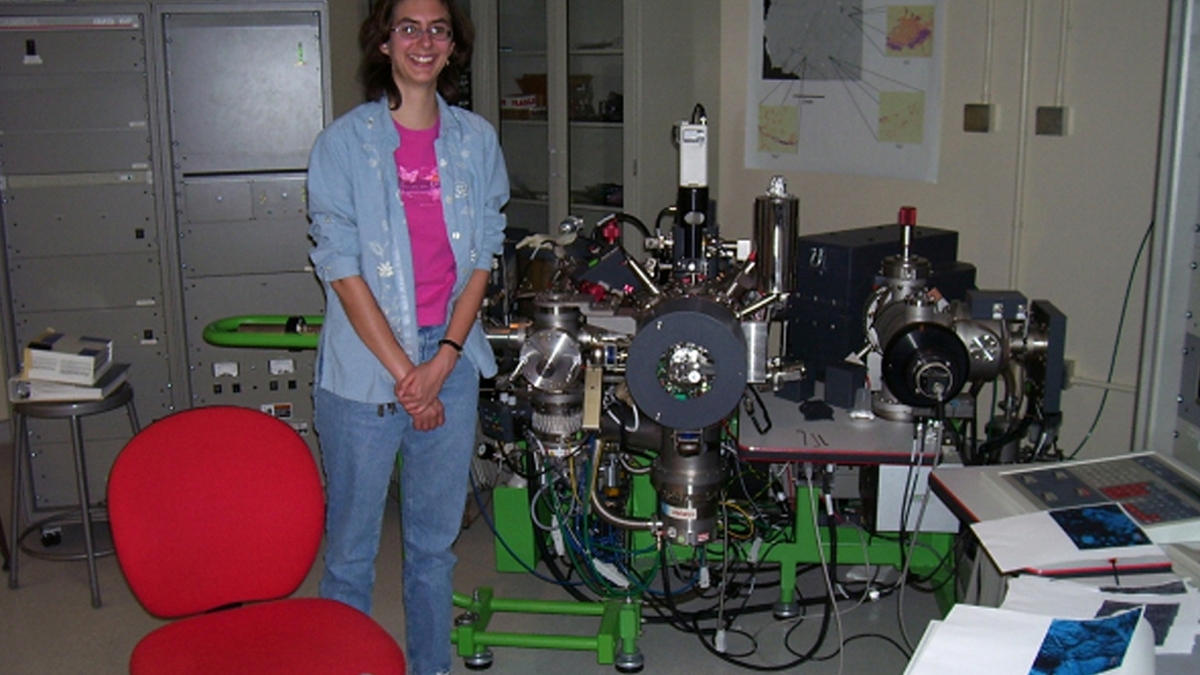Geology grad students awarded prestigious NASA fellowships

Four Arizona State University graduate students have received NASA Earth and Space Science Fellowships (NESSF) for research work in the area of planetary science. The ASU recipients, all in the School of Earth and Space Exploration (SESE), were awarded fellowships in the planetary science division. A total of 95 applications for planetary science were received, with 34 selected for award. The fact that 12 percent of the successful applications came from ASU is impressive and highlights the strong earth and space science research program on the campus.
The fellowships, given to support outstanding students pursuing graduate degrees in basic and applied research in Earth and space sciences, were awarded to: Cameron Mercer, Karen Rieck, Curtis Williams and Nathan Williams. All four students are pursuing doctorates in geological sciences.
Three former recipients of this award, SESE students Melissa Bunte, Matt Sanborn and Lev Spivak-Birndorf, will be graduating from ASU this year. Another former SESE graduate student, Gregory Brennecka (Ph.D., 2011), was also a recipient of this award.
“These fellowships recognize several of the outstanding students that we have in SESE’s doctoral program,” says Kip Hodges, director of the school. “We are extremely proud of the accomplishments and exceptional work being carried out by these individuals recognized through this prestigious fellowship program.”
The fellowship program is a competitive award that speaks highly of each student’s work, as well as their advisors. Awards of $30,000 per year are made for up to three years, contingent upon satisfactory progress, as reflected in academic performance, research progress, and recommendation by the faculty advisor, and the availability of funds.
Cameron Mercer, who plans to continue studying planetary science as a professor or research scientist and would like to become an astronaut, will be analyzing Apollo 16 impact melts to better understand their complex thermal histories, and to clarify and expand upon previous impact chronologies of the Apollo 16 site. One of the highest priorities for NASA in lunar science is to establish an absolute chronology of lunar impact events, with significant implications for the bombardment history of the Earth and other planets of the inner Solar System.
“I am excited to have the opportunity to work with Apollo samples, and to contribute to a project that is considered one of NASA’s top goals in lunar science,” says Mercer. “This research will provide me with invaluable experience as I pursue my career goals.”
Karen Rieck is working to place better constraints on the minor element composition of the solar wind through the analysis of collector wafers that flew on NASA’s Genesis spacecraft. To accomplish this, she will be interacting with analysts on the Genesis science team to obtain, prepare, and analyze samples using secondary ion mass spectrometry to measure solar wind elemental fluences in Genesis’s collector wafers.
“Through this project I can work directly with samples returned by Genesis,” says Rieck. “The research that NESSF will be supporting is perfectly in-line with my dream for a career centered on investigating planetary geology and cosmochemistry. I hope that the experience I gain studying solar wind prepares me for researching other materials collected in future sample-return missions.”
Curtis Williams applies geochemical techniques to understand the dynamics of the early Solar System. With recent analytical advances, scientists are now able to obtain essential chemical and isotopic measurements on extremely rare and valuable planetary materials while still preserving the majority of such samples for additional analyses. He will be developing and utilizing state-of-the-art isotope analysis techniques for in situ measurement of the Ti and Mg isotope compositions of refractory inclusions, with the goals of constraining the chronology and degree of isotopic heterogeneity in the Solar Nebula.
According to him, “This research is particularly exciting because it has the potential to answer outstanding science questions including, ‘How did the Solar System form and evolve to its current diverse state?’ which is highlighted in the NASA SMD Science Plan for 2007-2016.”
Nathan Williams’ work involves reconstructing the tectonic history of the Moon using Lunar Reconnaissance Orbiter Camera data. Although the Moon does not have tectonic plates like Earth, it does have faults and earthquakes (or “moonquakes”) like the ones on our planet. This fellowship will enable him to study the sources and timing of tectonic activity on the Moon. He plans to continue conducting planetary science research through a career in academia.
“Receiving an NESSF fellowship is a national honor and tremendous opportunity to gain experience conducting cutting-edge scientific research,” he says. “It provides further fuel to propel my career and curiosity to explore the solar system and share this exciting research with our country.”
The fellowship program supports continued training of a highly qualified workforce in disciplines required to achieve NASA’s scientific goals. In addition to the ASU students, this year’s recipients hail from such institutions as Stanford University, Brown University, Washington University, California Institute of Technology, and University of California, Los Angeles.
Learn more about the NESSF program here: http://nspires.nasaprs.com/external/solicitations/summary.do?method=init&solId={1DC0EDEE-32A0-0EAE-ED78-B1F6B624B473}&path=open